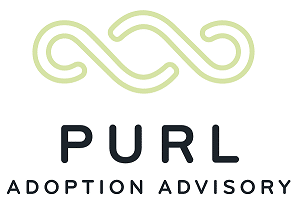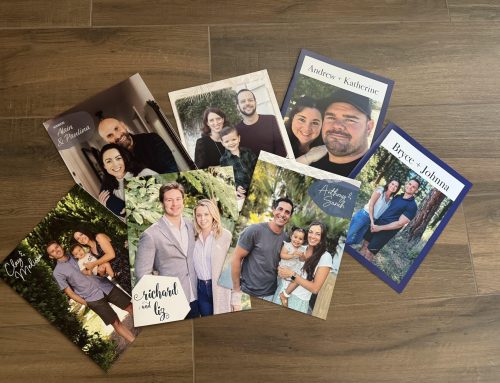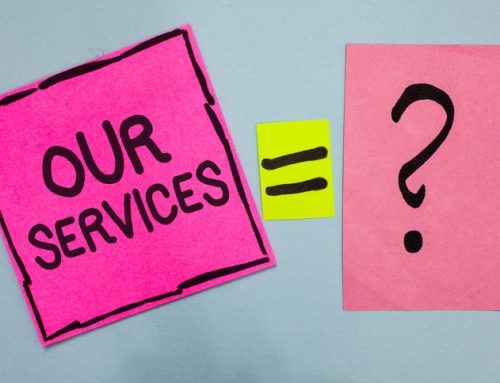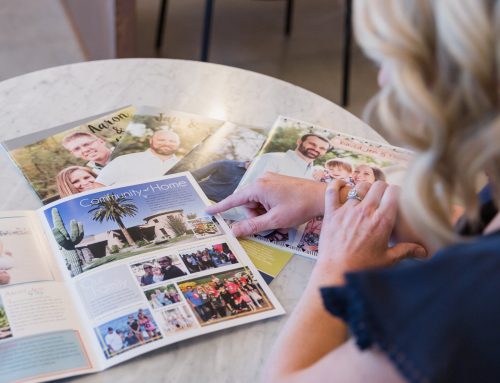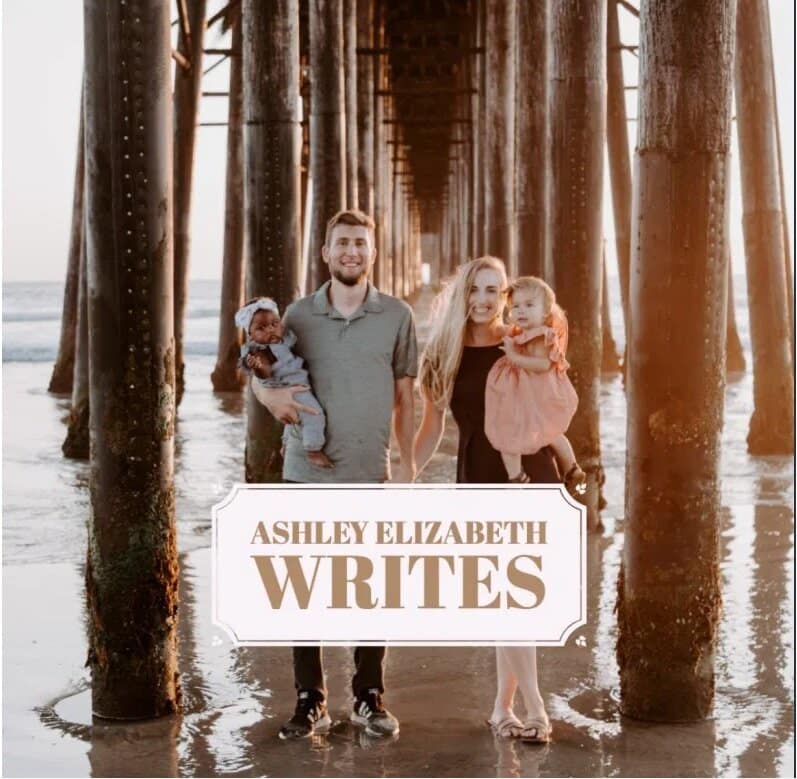
Ashley is a foster, adoptive and biological mom who likes to talk about feelings and eat ranch with every entree. She is a licensed counselor at Ataraxis Counseling where she supports women and their families with the beautiful chaos of life’s transitions. You can hear more from her on her blog at ataraxiscounseling.com
My daughter is only 10 months old and so fortunately, I have a long way to go in understanding the beautiful complexities of adopting transracially. I do know that though I look at both of my daughters and see two uniquely displayed personalities and physically made bodies, I feel the same insurmountable love for them both. I know from other friends who have adopted transracially that as their child grows up and starts to understand people’s looks, questions and comments, that things can feel heavy and confusing. I believe that this isn’t unique to transracial adoption, as many kids who were adopted struggle to sort through those questions related to their beginnings and their biology. But adopting transracially is specifically identifying because from the outside, our family looks different. We don’t match. We can’t avoid the topic of adoption coming up, simply by trying to avoid those discussions that day at the grocery store, simply because our beautiful daughter doesn’t look like us. We have heard, “One doesn’t look like the other!” and “Whose kids are these? Yeah, but who is her mom?” “What’s this one’s story?” Only to have me ignore inappropriate comments on occasion, redirect frequently, or directly ensure there is no confusion by stating plainly, “Yes, they are both my daughters. Yes, I am their mother. No, I am not the nanny. Yes, they are sisters.” And for now, with both of my daughters being so young, these encounters may be draining for me, but somehow I can find reprieve in knowing for now, my daughter doesn’t understand these questions. That won’t last forever though.
If I’m being honest, one of my least favorite pieces of adoption is the reality that it comes with the responsibility to educate. I’m not saying this is an every moment kind of responsibility, but it certainly is a frequent occurrence. I certainly enjoy sharing what we’ve learned with our adoption community and with our friends and family. But educating strangers when the opportunity arises can feel heavy. Many times people insert their questions out of mere curiosity and fascination: not because they are necessarily wanting to learn how to grow their families through adoption. Though I believe it’s helpful to consider people having the best intentions with questions out in public, I have to remember to create boundaries out of respect for my daughter’s story, as well as my own emotional wellbeing! I remember taking a swim class with my eldest before our youngest was born. There was a white mother in the swim class with us last summer who had her beautiful black daughter with her. I could tell she was on edge with everyone’s attentive looks at her daughter, and I had in particular been smiling at her because our daughter was on her way into this world and I was hoping to connect with her. I realize now that though she may have seemed disengaged, she simply may have wanted to just be a mom at swim class with her daughter. Not to be seen as an adoptive mom at swim class or to be eagerly waiting for another moment to connect with another hopeful adoptive mom. I feel that way sometimes too. When I take my daughters to a park or some other public outing, I just want to be a mom sometimes. I don’t always want to get into the topic of adoption like so many strangers want to engage in many days. I think this is a unique piece that comes with adopting transracially. We don’t blend in and most days, people want to engage on the topic.
Finally, the last piece of adopting transracially that I firmly believe shaped our decision to adopt was that we do not believe our child should be the only person of color (or person of a different race or nationality) that I am in a relationship with on a daily basis. My daughter needs to be surrounded by other men and women who look like her. In living in a predominately white state, we have to be more intentional about which parks we choose to go to, which library baby reading times we attend, what church we belong to, and even what neighborhood we ended up purchasing our home in. And this has been one of the most enriching and meaningful gifts to US. To have my friends come around me in helping with my daughter’s hair care and to grow closer to one another in our friendships, that Shiloh would have role models and family friends to rely on during confusing times of figuring out what it means to be a black female is absolutely crucial. Obviously, being intentional about book and media content that reflects her black characteristics is important, but actually being in a relationship with people who understand what it is like to live in black bodies in America is absolutely critical. Adopting transracially also means being open to learning and educating ourselves on the realities for many people of color. I can recommend the following books and features that I found highly impactful:
The New Jim Crow: Mass Incarceration in the Age of Colorblindness by Michelle Alexander (2010)
They Can’t Kill Us All: Ferguson, Baltimore, and a New Era in America’s Racial Justice Movement by Wesley Lowery (2016)
I’m Still Here: Black Dignity in a World Made for Whiteness by Austin Channing Brown (2018)
You Can’t Touch My Hair: And Other Things I Still Have to Explain by Phoebe Robinson (2016)
the 13th Filmmaker Ava DuVernay explores the history of racial inequality in the United States, focusing on the fact that the nation’s prisons are disproportionately filled with African-Americans (2016).
the Hate U Give (also an amazing book) Starr Carter is constantly switching between two worlds — the poor, mostly black neighborhood where she lives and the wealthy, mostly white prep school that she attends. The uneasy balance between these worlds is soon shattered when she witnesses the fatal shooting of her childhood best friend at the hands of a police officer. Facing pressure from all sides of the community, Starr must find her voice and decide to stand up for what’s right (2018).
I’m certainly not the only voice out there regarding transracial adoption. I do think that hearing from adoptive parents is beneficial, but it’s especially pertinent to hear from adult adoptees as well. If you want to hear from other sources on adopting transracially, I can recommend the following blogs with more content I’ve found encouraging and helpful!

Ashley is a foster, adoptive and biological mom who likes to talk about feelings and eat ranch with every entree. She is a licensed counselor at Ataraxis Counseling where she supports women and their families with the beautiful chaos of life’s transitions. You can hear more from her on her blog at ataraxiscounseling.com
My daughter is only 10 months old and so fortunately, I have a long way to go in understanding the beautiful complexities of adopting transracially. I do know that though I look at both of my daughters and see two uniquely displayed personalities and physically made bodies, I feel the same insurmountable love for them both. I know from other friends who have adopted transracially that as their child grows up and starts to understand people’s looks, questions and comments, that things can feel heavy and confusing. I believe that this isn’t unique to transracial adoption, as many kids who were adopted struggle to sort through those questions related to their beginnings and their biology. But adopting transracially is specifically identifying because from the outside, our family looks different. We don’t match. We can’t avoid the topic of adoption coming up, simply by trying to avoid those discussions that day at the grocery store, simply because our beautiful daughter doesn’t look like us. We have heard, “One doesn’t look like the other!” and “Whose kids are these? Yeah, but who is her mom?” “What’s this one’s story?” Only to have me ignore inappropriate comments on occasion, redirect frequently, or directly ensure there is no confusion by stating plainly, “Yes, they are both my daughters. Yes, I am their mother. No, I am not the nanny. Yes, they are sisters.” And for now, with both of my daughters being so young, these encounters may be draining for me, but somehow I can find reprieve in knowing for now, my daughter doesn’t understand these questions. That won’t last forever though.
If I’m being honest, one of my least favorite pieces of adoption is the reality that it comes with the responsibility to educate. I’m not saying this is an every moment kind of responsibility, but it certainly is a frequent occurrence. I certainly enjoy sharing what we’ve learned with our adoption community and with our friends and family. But educating strangers when the opportunity arises can feel heavy. Many times people insert their questions out of mere curiosity and fascination: not because they are necessarily wanting to learn how to grow their families through adoption. Though I believe it’s helpful to consider people having the best intentions with questions out in public, I have to remember to create boundaries out of respect for my daughter’s story, as well as my own emotional wellbeing! I remember taking a swim class with my eldest before our youngest was born. There was a white mother in the swim class with us last summer who had her beautiful black daughter with her. I could tell she was on edge with everyone’s attentive looks at her daughter, and I had in particular been smiling at her because our daughter was on her way into this world and I was hoping to connect with her. I realize now that though she may have seemed disengaged, she simply may have wanted to just be a mom at swim class with her daughter. Not to be seen as an adoptive mom at swim class or to be eagerly waiting for another moment to connect with another hopeful adoptive mom. I feel that way sometimes too. When I take my daughters to a park or some other public outing, I just want to be a mom sometimes. I don’t always want to get into the topic of adoption like so many strangers want to engage in many days. I think this is a unique piece that comes with adopting transracially. We don’t blend in and most days, people want to engage on the topic.
Finally, the last piece of adopting transracially that I firmly believe shaped our decision to adopt was that we do not believe our child should be the only person of color (or person of a different race or nationality) that I am in a relationship with on a daily basis. My daughter needs to be surrounded by other men and women who look like her. In living in a predominately white state, we have to be more intentional about which parks we choose to go to, which library baby reading times we attend, what church we belong to, and even what neighborhood we ended up purchasing our home in. And this has been one of the most enriching and meaningful gifts to US. To have my friends come around me in helping with my daughter’s hair care and to grow closer to one another in our friendships, that Shiloh would have role models and family friends to rely on during confusing times of figuring out what it means to be a black female is absolutely crucial. Obviously, being intentional about book and media content that reflects her black characteristics is important, but actually being in a relationship with people who understand what it is like to live in black bodies in America is absolutely critical. Adopting transracially also means being open to learning and educating ourselves on the realities for many people of color. I can recommend the following books and features that I found highly impactful:
The New Jim Crow: Mass Incarceration in the Age of Colorblindness by Michelle Alexander (2010)
They Can’t Kill Us All: Ferguson, Baltimore, and a New Era in America’s Racial Justice Movement by Wesley Lowery (2016)
I’m Still Here: Black Dignity in a World Made for Whiteness by Austin Channing Brown (2018)
You Can’t Touch My Hair: And Other Things I Still Have to Explain by Phoebe Robinson (2016)
the 13th Filmmaker Ava DuVernay explores the history of racial inequality in the United States, focusing on the fact that the nation’s prisons are disproportionately filled with African-Americans (2016).
the Hate U Give (also an amazing book) Starr Carter is constantly switching between two worlds — the poor, mostly black neighborhood where she lives and the wealthy, mostly white prep school that she attends. The uneasy balance between these worlds is soon shattered when she witnesses the fatal shooting of her childhood best friend at the hands of a police officer. Facing pressure from all sides of the community, Starr must find her voice and decide to stand up for what’s right (2018).
I’m certainly not the only voice out there regarding transracial adoption. I do think that hearing from adoptive parents is beneficial, but it’s especially pertinent to hear from adult adoptees as well. If you want to hear from other sources on adopting transracially, I can recommend the following blogs with more content I’ve found encouraging and helpful!
